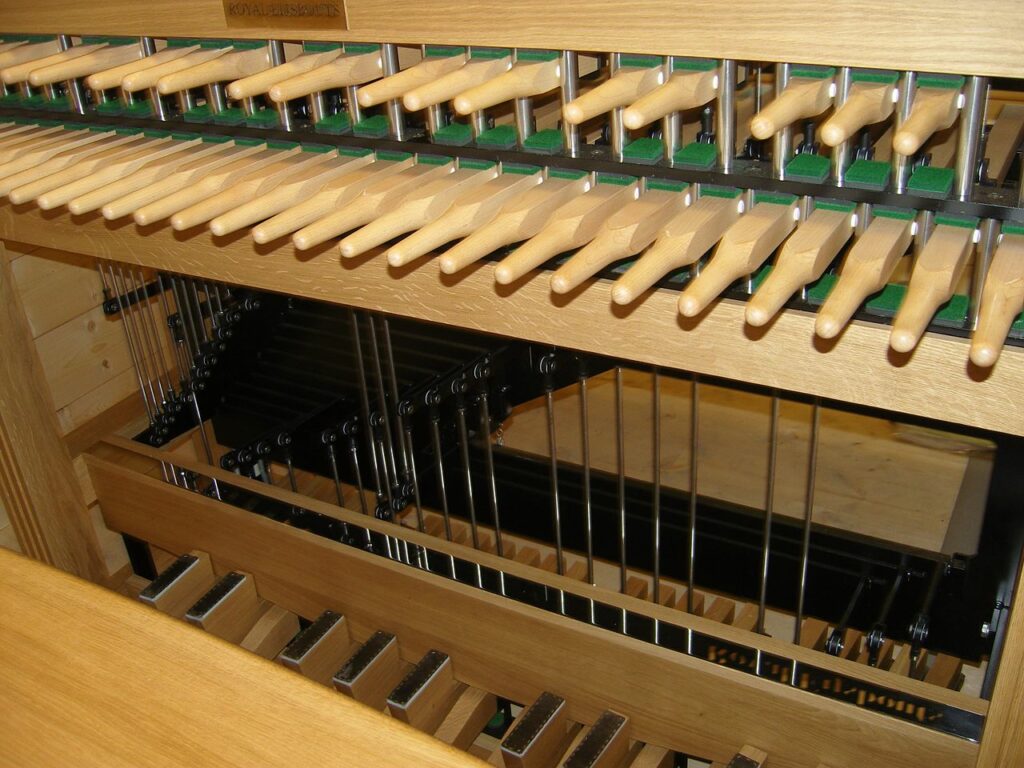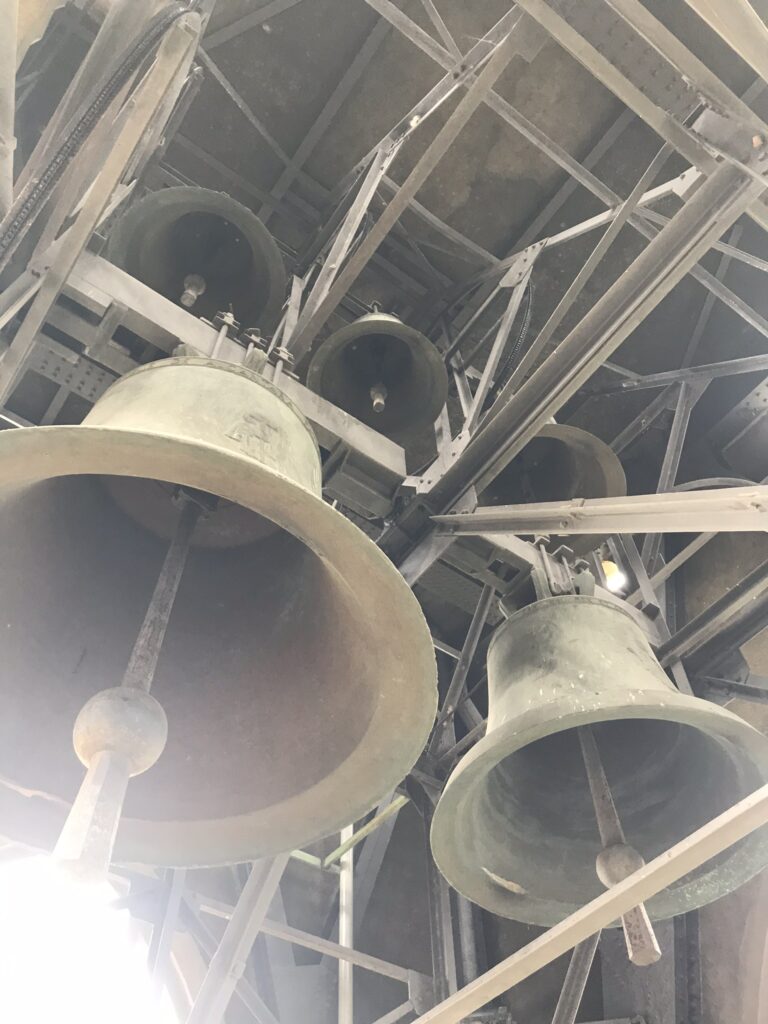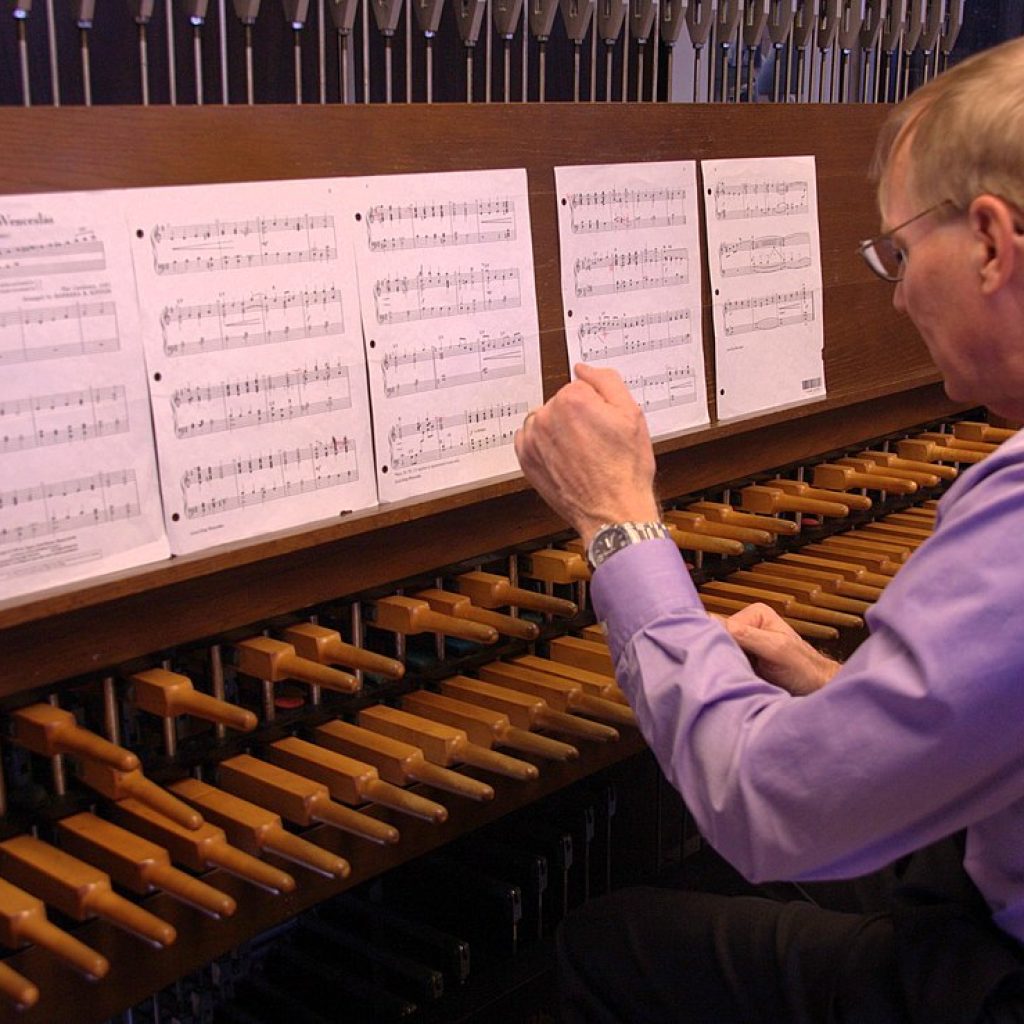The Carillon
The Carillon is a member of the percussion family.It orignates from Belgium, the Netherlands, and the French Netherlands and was invented by Jacob van Eyck and the Hemony brothers(Pieter and François) in the 16th century.

Bgwwlm at English Wikipedia, Public domain, via Wikimedia Commons




